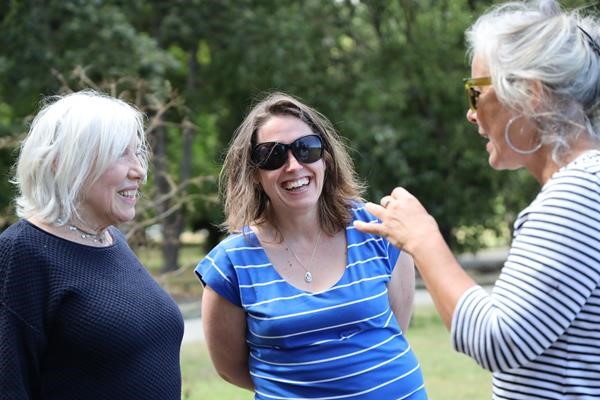A Hyde-Out in Whanganui
Associate Professor Nikki Hessell recently took part in 'A Hyde-Out in Whanganui', an event to celebrate writer Robin Hyde's connections with Whanganui.
 In the 1920s and 1930s, major New Zealand writer Robin Hyde helped the country to forge an identity separate from Britain with her novels, poems, and journalism. And, although some of these works are almost 100 years old, perhaps they can offer readers perspective on issues that still affect modern Kiwis, like embracing multiculturalism.
In the 1920s and 1930s, major New Zealand writer Robin Hyde helped the country to forge an identity separate from Britain with her novels, poems, and journalism. And, although some of these works are almost 100 years old, perhaps they can offer readers perspective on issues that still affect modern Kiwis, like embracing multiculturalism.
So says Nikki Hessell, associate professor of English Literature at Victoria University of Wellington. At 'A Hyde-Out in Whanganui,' Associate Professor Hessell discussed Hyde’s writing about Whanganui, which appeared in essays for New Zealand Railways Magazine.
“Most of the essays by others were tourist advertisements that tried to entice you to the town,” Associate Professor Hessell explains. “If Māori were mentioned—and they often weren’t—they were usually treated as local colour. Hyde’s approach is radically different. She centres Whanganui around local Māori and the river, and says ‘…when approaching Wanganui, my strong advice both to New Zealander and tourist is to remember that here, just under the surface, is Māori world— Māori talk, Māori custom, Māori charm. You won't get the best out of Wanganui if you eliminate the Māori from your quest.’”
In the same essay, Hyde also comments on the very successful Māori-owned farms around the Whanganui River, and challenges negative stereotypes about Māori. Associate Professor Hessell contends that Hyde “certainly imagined the country in bicultural ways” and cared about “the river’s spiritual role in the community.”
The “Hyde-Out” event included a number of academics, documentarians, creative writers, postgraduate students, and community members, including leading Hyde expert Dr Pat Sandbrook of Massey University. A highlight of the weekend, Associate Professor Hessell says, was a special screening of A Home in this World, a short documentary about Hyde's life, directed by Juanita Deely.
The “Hyde-Out” group also travelled to different Whanganui sites associated with Hyde, including the former Whanganui Chronicle buildings and houses in which she lived. At each site, they discussed Hyde’s connections to the place, a form of place-based community research. Associate Professor Hessell says that standing in the lounge of a house where Hyde lived with friends was particularly moving.
“It was also powerful for me, as someone who studies her journalism, to stand in the old Whanganui Chronicle offices,” Associate Professor Hessell says. “The basic structure of these offices is not much changed since Hyde’s time, although the space is used for other things now. Standing there gave me a real sense of Hyde’s serious professional life as a journalist, the real conditions in which she worked.”
